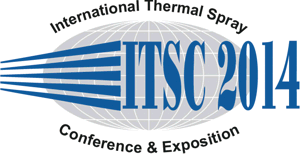
|
| Abstract No.: |
|
| Title: |
Multi-scale multi-points inter-splat connection enhanced sintering model for plasma-sprayed lamellar TBCs
|
|
| Authors: |
Guan-Jun Yang / School of Materials Science and Engineering, Xi'an Jiaotong University, China
Hua Xie* / State Key Laboratory for Mechanical Behavior of Materials, Xi'an Jiaotong University, China
Cheng-Xin Li/ State Key Laboratory for Mechanical Behavior of Materials, Xi'an Jiaotong University, China
Chang-Jiu Li/ State Key Laboratory for Mechanical Behavior of Materials, Xi'an Jiaotong University, China
|
|
| Abstract: |
The sintering of plasma-sprayed thermal barrier coatings (TBCs) during high temperature exposure leads to both the increase of thermal conductivity and stiffening, resulting in the TBCs fast degradation or early failure. Previous sintering models, which are based on the healing of pores with an iso-thick gap, can not explain the ultra-fast sintering kinetics during the initial sintering stage. In this study, a sintering model based on the multi-scale multi-points inter-splat connection in the wedge-shaped inter-splat pores is proposed to comprehensively understand the whole sintering process. Results show that the smooth splat surface evolved to a rough surface with multi-scale convexes after high temperature exposure through step-forming across different columnar grains together with grain boundary grooving and wavy surface formation. First, some columnar grains rised to form the large-scale convexes. Second, the ring-like middle-scale convexes was formed near the columnar grain boundary due to the grain boundary grooving behavior. Third, the multi-angular surface convexes with a height of several nanometers were formed on the top surface of each columnar grains due to the anisotropy in the surface free energy density of YSZ. As a result, the multi-point connection between the adjacent splat surfaces is formed by the multi-scale convexes on splat surfaces, which make up the wedge-shaped inter-splat pore. This multi-scale multi-point connection between splat surfaces significantly accelerates the pore healing. Based on this model, the extremely fast sintering kinetics during the initial sintering stage can be well understood. This model also provides novel opportunities to further tailor the sintering kinetics to aim at developing high performance and sintering resistant TBCs.
|
|
